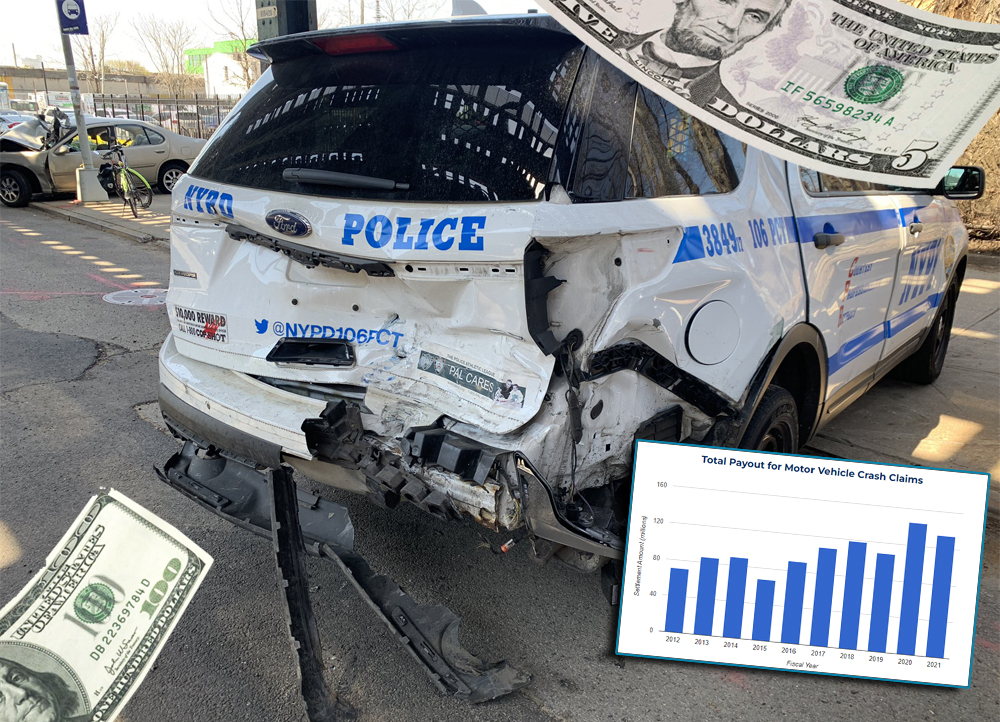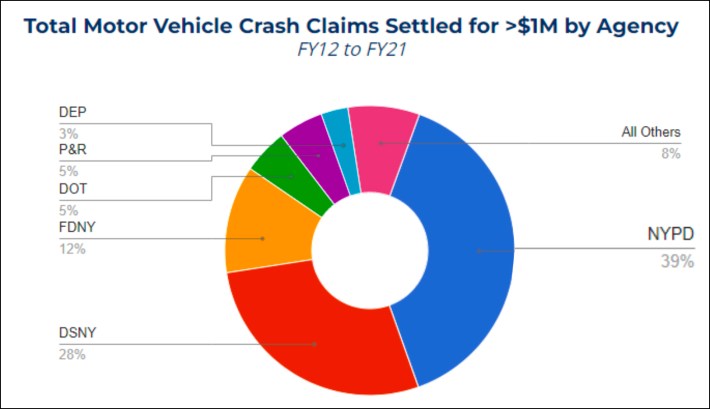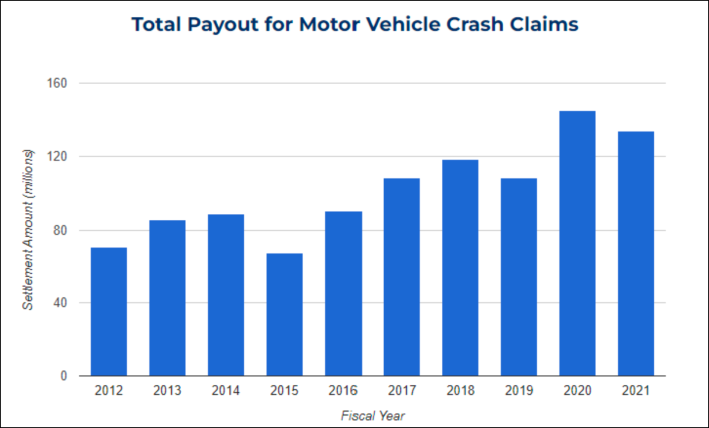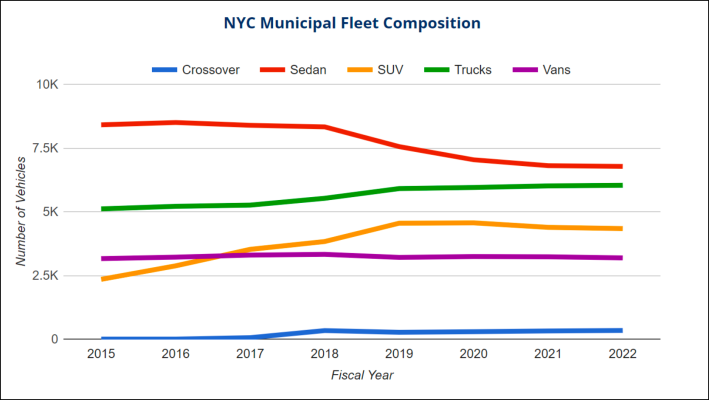Comptroller Lander: Make City Drivers Safer By Punishing Agencies for Crashes
8:00 PM EST on February 12, 2023

That crash is gonna cost you (no, really)!
City Comptroller Brad Lander says that settlements to victims of crashes caused by city workers in city vehicles should be paid for by the agency whose worker caused the damage — instead of from the general city budget — as a way to get agency brass to incentivize safety.
"The city should place the budgeted allocation for projected settlement costs within each agency’s budget," Lander's office recommends in the new report, issued Sunday night. "Agencies that reduce claims settlements below the projected amounts would be able to apply a portion of the savings towards the following year’s budget, while agencies whose claims exceed their projections would be responsible for covering the costs."
That and other recommendations are part of the report analyzing 10 years of city settlements for vehicular crashes involving municipal workers.
There's nothing new about the numbers in Lander's report — Streetsblog has covered the $653.9 million in personal injury settlement claims filed between fiscal year 2012 and 2021, and that crash settlements have risen from $75 million in fiscal year 2012 to $130 million in fiscal year 2021.
But this time, Lander's office provided a bounty of recommendations that go beyond the cold hard numbers. The advice in the report [PDF] includes:
- Accelerating the adoption of vehicle technologies and design features proven to reduce crashes: Offering a hat tip to the city's 2017 plan for a safer fleet that included new technology such as speed governors, Lander wants the rollout to, well, roll out faster. For instance, only 6 percent of the city fleet is equipped with automatic emergency braking technology. And the city's speed cap program remains only a pilot, albeit a successful one.
fleet, larger vehicles were involved in more frequent and expensive claims than smaller vehicle types. ... Trucks accounted for 29 percent of the city Fleet in 2021, but nearly 40 percent of claims over $1 million. Overall, larger passenger vehicles including pick-ups, vans, and SUVs collectively account for 22 percent of settlement costs over $1 million, with most of these crashes occurring after FY 2016." The share of SUVs in the city fleet has grown more than any other vehicle type, from 10 percent in FY 2015 to 18 percent today.
“In cases when a New Yorker is hit and harmed by a squad car or a garbage truck, it’s New York City taxpayers who have to settle the bill," Lander said in a statement. "By accelerating adoption of fleet safety technologies, reducing the size and number of vehicles in the city fleet, and holding city drivers and agencies accountable, we can save lives – and many of millions of dollars, too."
Safety advocates liked what they heard.
"Each department should be responsible for safe driving," said Elizabeth Adams, the senior director of Advocacy and Organizing at Transportation Alternatives. "Comptroller Lander's proposal to hold agencies responsible for reducing crashes is an important step toward creating a safer city."
On the plus side, the total number of claims that the city has settled has dropped from roughly 820 in fiscal year 2012 to about 520 in fiscal year 2021. But the average amount of the settlement is soaring, from $15,187 in FY 2012 to $242,365 in FY 2021.
On the down side, cops remain the biggest and costliest culprit for taxpayer-funded city payouts. By June 2022, NYPD vehicles made up 32 percent of the municipal fleet yet were involved in 35 percent of crashes resulting in claims, and the $246.8 million in payouts that year represented 37.7 percent of the overall cost.

After initial publication of this story, a City Hall spokesman sent over the following statement:
“While the report does not cover this administration, since Mayor Adams has been in office, our streets have gotten safer, and pedestrian deaths are now near record lows. Fiscal responsibility and street safety have been hallmarks of the Adams administration. Since last year, we have taken significant strides to align our fleet management with our street safety goals, with a successful pilot to nearly eliminate speeding in city vehicles and an initiative to reduce the city’s fleet by nearly 900 non-emergency vehicles, saving more than $13 million and leading to five million fewer miles driven per year.”
City Hall also thought the Comptroller's report needed more context, especially in light of the fact that the average crash settlement increased over the 10-year period, even as overall traffic injuries declined about 8 percent. A City Hall spokesperson suggested that the increasing size of the average payout is not related to fleet crashes or street design.
Gersh Kuntzman is editor in chief of Streetsblog NYC and Streetsblog USA. He also writes the Cycle of Rage column, which is archived here.
Stay in touch
Sign up for our free newsletter
More from Streetsblog New York City
Report: Road Violence Hits Record in First Quarter of 2024
Sixty people died in the first three months of the year, 50 percent more than the first quarter of 2018, which was the safest opening three months of any Vision Zero year.
Street Sweepers Could Nab Illegal Parking Under State Bill
Smile for the street-sweeper!
Thursday’s Headlines: The Way of Water Edition
The "Blue Highways" campaign wants the mayor to convert a downtown heliport into a freight delivery hub. Plus more news.
Gotcha-Heimer! Anti-Congestion Pricing Jersey Rep. With a City Speeding Ticket Drove to Manhattan on Wednesday
New Jersey's most vociferous opponent of congestion pricing parked illegally and once got a speeding ticket.






